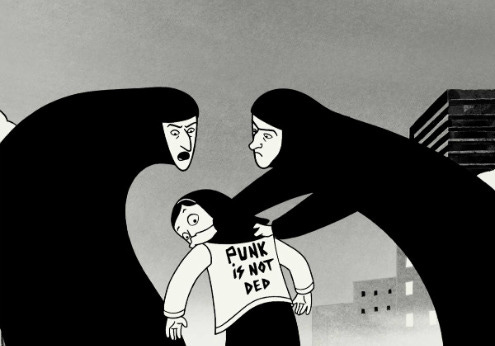Heroes of the Zeroes: Persepolis
Heroes of the Zeroes is a daily, alphabetical look back at the 365 best films of 2000-2009.
"Persepolis" Rated PG-13 2007
Had “Peanuts” evolved to punk music, politics and aching adolescent angst, the comic strip would’ve looked like 2007’s “Persepolis.”
This predominantly French-language story of modern Iranian culture possesses an ambition and lyricism rare to animation — a mostly black-and-white adaptation of Marjane Satrapi’s autobiographical graphic novels of the same name. (Satrapi, who now lives in Paris, co-directed, co-wrote and serves as the lead character in the film.)
Here, the Red Baron is real, bombing buildings in young Marjane’s home of Tehran. “Persepolis” opens in 1978 as the precocious 9-year-old follows her revolutionary family’s call to end the Shah of Iran’s monarchic rule.
When Marjane’s parents send her to Vienna as a teen, that doesn’t mean this global traveler will become worldly wise. Even in safer havens, matters of daily life intrude on her dreams, desires and better nature.
Composed with visual and thematic weight in mind, “Persepolis” conjures horrifying apocalyptic imagery akin to Todd McFarlane or Gerald Scarfe — clouds on a background resembling thick card stock, mortars exploding into handprints of smoke, silhouetted atrocities. Yet it’s never so stylized as to lose gentle humanity, as in Marjane’s storybook-like talks with her god.
Once Marjane exits Iran and embarks on a series of failed relationships (one man gay, one unfaithful, one with whom she settles too soon), “Persepolis” grows less involving. Yet it still retains powerful ties to the first act’s look at how spiritually wearying the give-and-take of constant anarchy can grow, especially for a child in constant search of identity.



